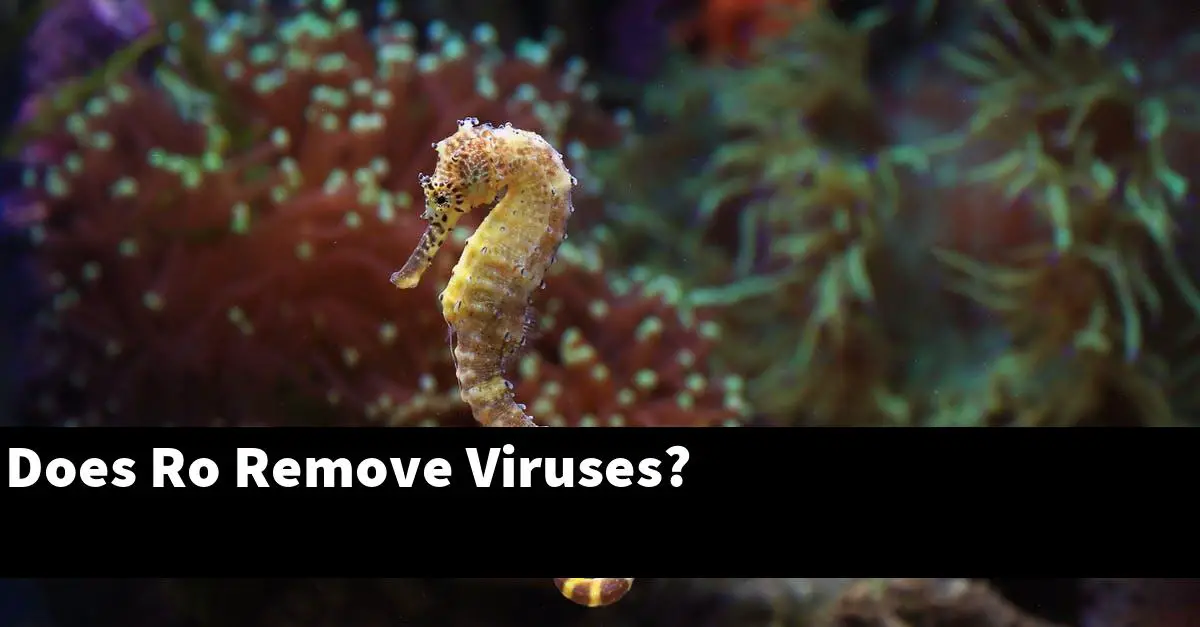No, RO does not remove viruses. RO is a process of reverse osmosis that is used to remove dissolved minerals from water.
What does reverse osmosis not remove from water?
Reverse osmosis does not remove any molecules from water. Reverse osmosis removes salt and other molecules from water.
Can virus pass ro membrane?
Can virus pass through the ro membrane? There is some debate as to whether or not this is possible. Some experts believe that it is possible for a virus to pass through the ro membrane, while others believe that it is not possible.
The main reason why this is debated is because the ro membrane is a very thin membrane and is not very strong. Additionally, the ro membrane is located in the respiratory tract and is in close proximity to the nose and mouth.
Therefore, it is possible for a virus to enter the respiratory tract and then pass through the ro membrane. However, it is also possible for a virus to enter the respiratory tract and be eliminated from the body.
Does reverse osmosis remove parasites?
Reverse osmosis is a process that uses pressure and water to remove pollutants and other unwanted substances from a liquid. It is often used to treat water, but it can also be used to remove parasites.
The process of reverse osmosis starts by adding water to a pressure chamber. The pressure forces the water molecules through a semipermeable membrane, which removes all the contaminants and other unwanted substances.
The purified water then exits the chamber and can be used in any way that regular water can be used.
Reverse osmosis is an effective way to remove parasites because it is able to remove a wide variety of contaminants, including viruses, bacteria, and parasites. It is also effective at removing heavy metals and other toxic substances.
Overall, reverse osmosis is an effective way to remove contaminants from water. It is also a reliable way to remove parasites.
What does a ro system remove?
A ro system removes moisture, vapor, and air from the air conditioning system.
Does reverse osmosis remove iron?
Reverse osmosis is a process in which water is forced through a semi-permeable membrane to remove solids, primarily dissolved minerals and salts. Iron is removed from water through reverse osmosis, but at a significant cost.
The high cost of reverse osmosis means that it is not often used to remove iron from water.
What is not removed by reverse osmosis?
Reverse osmosis is a water filtration process that removes many types of contaminants from water. It is often used to purify water for drinking, brewing, and other uses.
Among the things not typically removed by reverse osmosis are:
-pesticides
-heavy metals
-chemicals
-microorganisms
-fouling agents
Does reverse osmosis remove fluoride?
Reverse osmosis removes contaminants, such as fluoride, from water. Fluoride is a naturally occurring chemical that can be found in water, food, and toothpaste.
Fluoride is added to water supplies to help prevent tooth decay.
Does reverse osmosis remove coliform bacteria?
Reverse osmosis is a process used to remove large particles, such as bacteria and other contaminants, from a liquid. Reverse osmosis is a relatively new technology that has been used to treat water since the 1970s. The process works by forcing water through a semipermeable membrane that has a high concentration of salt.
The high salt concentration forces the water through the membrane at a very high pressure, and this process is often used to clean water supplies.
Reverse osmosis is effective at removing large particles, such as bacteria and other contaminants, from water. However, reverse osmosis is not effective at removing small particles, such as viruses and chemicals.
Therefore, reverse osmosis is often combined with other water purification technologies, such as ultraviolet light and chlorine, to clean water supplies.
Do water filters get rid of viruses?
Water filters can remove a variety of contaminants, but viruses are not one of them. Viruses are tiny, and even the best water filters will not be able to remove them.
What does reverse osmosis remove?
Reverse osmosis removes water, dissolved salts, and other substances from a solution by forcing the water through a semipermeable membrane. The high pressure and temperature cause the water molecules to break down into their atomic components, leaving the dissolved salts behind.
Conclusion
There is no scientific evidence to support the claim that RO systems can remove viruses. While RO systems are effective at removing bacteria and other contaminants, they are not designed to remove viruses.
Additionally, there is no evidence to suggest that RO systems are more effective than other water filtration methods at removing viruses.

